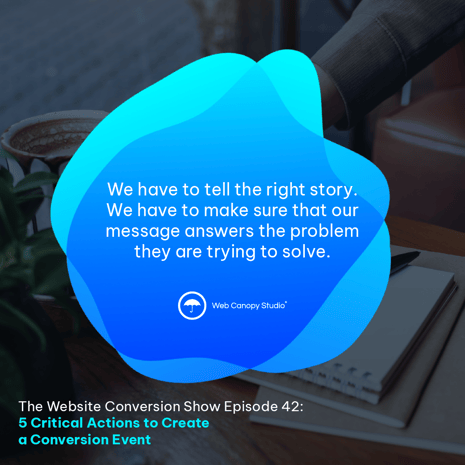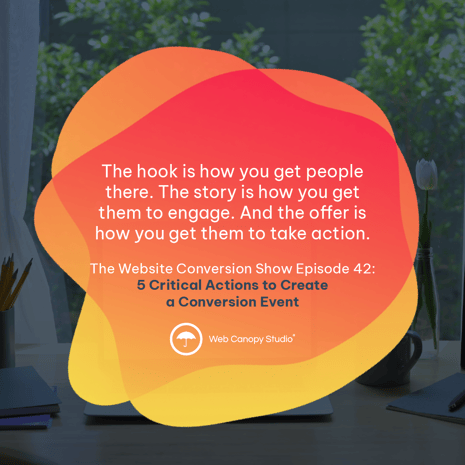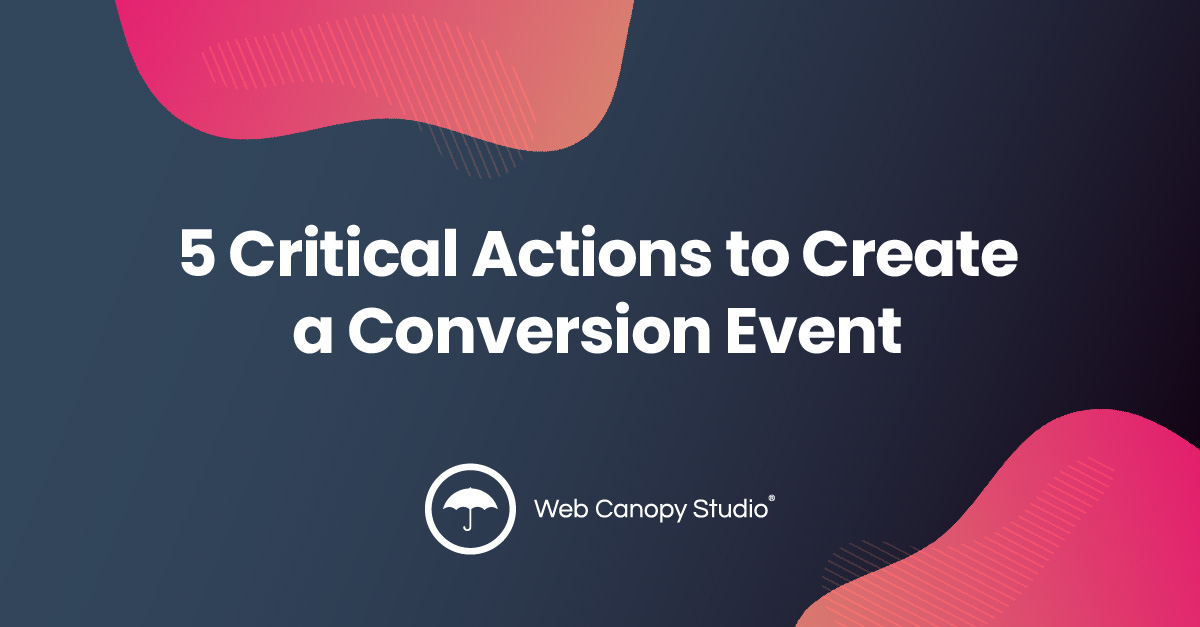The whole point of online marketing is conversions. Getting a sale is the ultimate conversion event, but depending on the length of your sales cycle, that could take a year or just a couple of minutes.
While all roads lead to the sale, there are many different ways to score conversions: signing up for newsletters, clicking a Read More link, or filling out a form. Whether that's to request more information or download a special report, or even just sign up for the aforementioned newsletter, the forms can take on many different, well, forms.
We've got five steps that you need to take to reach it, but most people stop at four. So we'll share that special fifth secret with you here.
We get a lot of this information from great long-form copywriters like Russell Brunson, Bob Bly, and Dan Kennedy, three pioneers who have helped companies make millions of dollars just by writing amazing sales letters that are almost guaranteed to be successful. (If you ever get the chance, get their books and read and re-read them.)
The first step is to create a hook. We have to hook the audience like we're fishing, or we're never going to get them in the boat. If we don't put out the right information to catch their attention and appeal to them, we're at a complete loss. It's not worth going any further.
Next, we have to tell the right story and make sure our message answers the right questions. That means showing the problems that people have, acknowledging that, and getting on their level.
Third, we have to give them an offer. It's not necessarily a "buy this now" step, although, with the aforementioned sales letters, it is. The offer is the call to action, which can be "Download this report" or "Sign up for our newsletter." They are "buying" something with their attention, time, or money.
These three steps are how Russell Brunson, et. al. set up their sales letters: Hook, story, offer. If you do anything with sales funnels, everything boils down to hook, story, offer. That could be ads, landing pages, email catalogs, or even your sales videos and seminars.
The hook is how you get people there, the story is how you get them to engage, and the offer is how you get them to take action. Without any or all of those steps, nothing is going to happen.
The fourth step is to capture the lead. We presented the offer, and they have taken the next step, they have converted. (Remember, a conversion is not necessarily a sale, it's taking any kind of positive action.) So we have to capture their information or their data and get it into the system. They fill out the form, and we put that information into the CRM.
The problem is, most people stop right there. They run the ads or publish the ebook, or people accept the offer and fill out the form. And then they stop. Their information sits on the CRM, and no one touches it. No one does anything with it, and the company just sits and waits in the hopes that the offer was enough to convince the person to buy. If they don't buy, those leads just fall into the "Oh, well, we tried" bucket.
But it's that all-important fifth step that leads to a conversion event: nurture the leads.
OK, it's not actually earth-shattering, but you would be surprised at how many people skip this step and then wonder why their sales are not picking up.
We have to nurture our leads like we're fertilizing and watering them, helping them to grow. We have to give them additional information and offers to get them to stay with us until they finally convert.
In a way, we're nurturing them right back into the hook. The leads don't go into a fish basket where they just sit (which is what happens when you stop at step #4). (I realize I'm at risk of overusing this whole fishing analogy, but follow me here.)

Nurturing goes right back into the hook because we have to give people a reason to come back. They're not just going to come back because they liked our ebook or because they filled out a form. No one has ever said, "I filled out a form three years ago about a piece of software. I should go back and buy it."
Nurturing can even include getting them to consider other issues. "You had this problem, but what about solving this other thing? Have you thought about that one, too? I can show you how to fix it." Nurturing is basically the middle of the sales funnel.
By nurturing, you're going to continue to share information and work to stay top-of-mind with those leads. Whether you're sending a series of emails, publishing a weekly or monthly newsletter, inviting them to webinars, holding master classes, or even making sales visits in their office.
This is also where your website becomes very valuable. Your blog articles, videos, important events, and so on. This is where you're talking about the issues your customers have rather than talking about yourselves. You want to get on their level as quickly as possible, and you only have two seconds to do that You're not going to get on their level by saying, "Look at how cool this thing is. I want to show you what I can do."
It happens by saying, "I understand you have this problem. I understand you're struggling with this issue. Here's how you can fix it."
Finally, you need to pitch them at this point. You have to close the sale. It doesn't have to be anything fancy, and you certainly don't want to be obnoxious. But you have to let them know they came to you and they had this problem. And you've built trust with them through a sales presentation or a video or a whole series of newsletters.
You've earned the right to say, "Let's take the next step. Let's book a call or fill out a strategy session and we'll go through this together." Or if you sell a product, you ask, "Can we do a demonstration?"
No One Cares About Your Product or Service
I'm sorry if that hurts your feelings, but it's the truth. No one cares about what you do. No one cares what you're selling until you've earned that respect or that right.
There are plenty of people who are so convinced of the awesomeness of their product/service — and you should be, otherwise, why bother selling it? — that they think it will sell itself. "The need is so obvious, why aren't people flocking to our door?"
Because no one cares. There are new products and services every day, and no one has time to care about each and every one. Because the people who are buying your product or service are getting a million messages about why they need to buy a million other products.
Think about your own email inbox and social media channels. Do you care about each and every one of the messages you're seeing? Do you care about the email newsletter that just arrived in your inbox, or did you delete it without opening it? Did you care about the Facebook ad you just saw last night, or did you scroll past it?
Of course not! You're busy, and those companies haven't earned your trust. Your messages are receiving the same amount of attention you're giving all the messages coming through your own communication channels.
Which means there's nothing special. What's special is when you talk to your prospects about the problems that they're having and tell them specifically about their problems and how to fix them.
Remember, be problem-focused, not product-focused.
Product-focused means you're focused on yourself and the things you can do. You're focused on what you're selling, how you feel and think. Problem-focused means you're focusing on your customers and prospects. What are they dealing with? What problems do they have?

It's a Circle, Not a Funnel
Take a look at the five steps we've created:
- Hook
- Story
- Offer
- Capture
- Nurture
Nurture leads right back to the hook, and we take the prospect (or paid client) right back through the circle again and again until they actually make a purchase. And even if they've made a purchase, they may need to make another purchase later. (Like a SaaS subscription: That's why SaaS companies have Client Success Managers. It's why they need to continue to nurture their existing clients.)
If you're looking to book a demo or make a strategy call and you're jumping straight into that from a cold start, you're going to fail. A lot. People are going to say no because you haven't done any of the work to get them to say yes. You put a lot of energy into getting them to consider you in the first place with the hook, story, and offer, but don't forget to capture, and especially nurture.
We'll even put that into action ourselves. We hooked you with this article, we told you a story of sorts article, and now here's our offer:
If you have not yet taken our website conversion assessment, be sure to check that out. You'll answer some questions about how your website is performing, and it will deliver a score and a personal report, a personal checklist on each of the things that you're doing and how you can improve them. That's it. Just take the assessment and learn how you can make your own website better. And we'll even help you along the way to figure out how to do it better!



